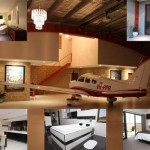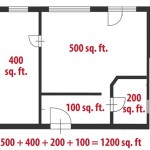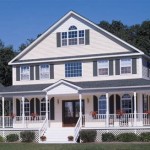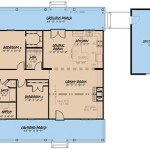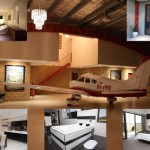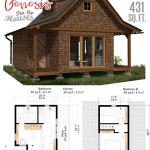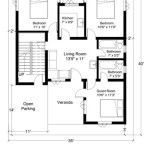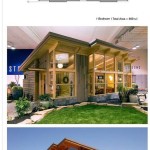Design Basics House Plans: Everything You Need to Know About the Future
Design Basics house plans represent a significant force in the residential construction industry, offering a wide range of architectural styles and layouts designed for diverse needs and preferences. Understanding the core principles of Design Basics, alongside emerging trends influencing their evolution, is crucial for anyone involved in home building, renovation, or simply interested in residential architecture. This article will explore the fundamental aspects of Design Basics house plans, delve into the considerations for modern adaptation, and examine the key factors shaping their future.
Understanding the Core Principles of Design Basics
Design Basics, as a concept, hinges on providing accessible and functional home designs that cater to a broad market. These plans typically prioritize efficient space utilization, ease of construction, and cost-effectiveness. The hallmark of a Design Basics house plan is its replicability and adaptability. While customization is always possible, the underlying blueprint offers a solid foundation for a variety of homeowners.
One of the central tenets of Design Basics is the clear and comprehensive documentation provided with each plan. This includes detailed floor plans, elevations, foundation layouts, and structural information. The level of detail ensures that builders and contractors have a complete understanding of the design requirements, minimizing potential errors and delays during construction. Clear documentation translates to a smoother building process and more accurate cost estimations.
Another key principle is the focus on livability. While aesthetics are important, Design Basics plans emphasize practical considerations such as traffic flow, natural light, and storage space. The goal is to create homes that are not only visually appealing but also comfortable and functional for everyday living. This often involves incorporating features such as open floor plans, generously sized kitchens, and strategically placed windows to maximize natural light.
Historically, Design Basics plans have often been associated with more traditional architectural styles. However, the company has expanded its offerings to include a wider range of designs, including modern, contemporary, and farmhouse styles. This diversification reflects the changing preferences of homebuyers and the growing demand for homes that incorporate contemporary design elements.
Considerations for Modern Adaptations
While the core principles of Design Basics remain relevant, adapting these plans to meet contemporary needs and preferences requires careful consideration. Modern homeowners often prioritize features such as smart home technology, energy efficiency, and sustainable materials. Integrating these elements into a Design Basics plan requires modifications and upgrades that can significantly enhance the value and appeal of the home.
Energy efficiency is a paramount concern for modern homebuyers. Adapting a Design Basics plan to improve energy performance may involve upgrading insulation, installing energy-efficient windows and doors, and incorporating solar panels or other renewable energy sources. Careful attention to HVAC systems and building envelope sealing can also contribute to significant energy savings and a more comfortable living environment.
Smart home technology is another area where Design Basics plans can be modernized. Integrating features such as smart thermostats, lighting controls, security systems, and automated appliances can enhance convenience, security, and energy efficiency. Planning for the necessary wiring and infrastructure during the design phase is crucial to ensure seamless integration of these technologies.
Material selection also plays a significant role in modernizing a Design Basics plan. Choosing sustainable and durable materials can reduce the environmental impact of the home and improve its long-term performance. Options such as reclaimed wood, recycled content products, and low-VOC paints and finishes can contribute to a healthier and more sustainable living environment. The implementation of rainwater harvesting and greywater recycling systems are also becoming increasingly popular.
Furthermore, adapting a Design Basics plan to accommodate changing lifestyle needs is essential. This may involve modifying the floor plan to create a home office, adding a flexible living space that can be used for various purposes, or incorporating universal design principles to ensure accessibility for people of all ages and abilities. These modifications can enhance the functionality and adaptability of the home to meet the evolving needs of its occupants.
Factors Shaping the Future of Design Basics House Plans
Several key factors are shaping the future of Design Basics house plans. These include advancements in technology, evolving homeowner preferences, and increasing concerns about sustainability and affordability. Understanding these factors is crucial for designers, builders, and homeowners who want to stay ahead of the curve.
Technology is playing an increasingly important role in the design and construction of homes. Building Information Modeling (BIM) software, which allows designers to create detailed 3D models of buildings, is becoming more widely used. BIM enables designers to visualize the design in greater detail, identify potential problems early on, and collaborate more effectively with builders and contractors. The precision and accuracy of BIM leads to reduced construction costs and improved project outcomes.
Homeowner preferences are also evolving. There is a growing demand for homes that are smaller, more energy-efficient, and more connected to the outdoors. Open floor plans, large windows, and outdoor living spaces are becoming increasingly popular. At the same time, there is a renewed interest in traditional architectural styles, such as Craftsman and farmhouse, but with a modern twist. Design Basics plans are adapting to these trends by offering a wider range of styles and layouts that cater to diverse preferences.
Sustainability and affordability are two intertwined concerns that are driving innovation in the housing industry. Homeowners are increasingly interested in reducing their environmental impact and lowering their energy bills. This is leading to a greater demand for homes that are designed and built to be energy-efficient and sustainable. At the same time, affordability is a major challenge in many housing markets. Design Basics plans are addressing this challenge by offering smaller, more efficient designs that can be built at a lower cost. The use of prefabricated components and modular construction techniques is also helping to reduce construction costs and time.
Another crucial factor is the rise of remote work. The pandemic fundamentally changed the way many people work, with a significant increase in remote work arrangements. This has led to a greater demand for homes that have dedicated home office spaces and are designed to support remote work. Design Basics plans are adapting to this trend by incorporating home office spaces into their designs and optimizing layouts for productivity and comfort. This includes dedicated spaces for video conferencing, increased soundproofing, and improved internet connectivity.
Finally, the aging population is also influencing the future of Design Basics house plans. As the population ages, there is a growing demand for homes that are designed to be accessible and adaptable for people of all ages and abilities. Universal design principles, such as wider doorways, grab bars in bathrooms, and ramp access, are becoming increasingly important. Design Basics plans are incorporating these features to create homes that are comfortable and safe for people of all ages and abilities.

How To Design A House From Sketch Reality

How To Draw A Floor Plan Live Home 3d

Floor Plans Learn How To Design And Plan

Floor Plans Learn How To Design And Plan

How To Draw Accurate Floor Plans Step By Guide

How To Draw Blueprints For A House With Pictures Wikihow

15 Key Floor Plan Symbols 74 Architectural Abbreviations Foyr

How To Draw Accurate Floor Plans Step By Guide

Simple House Plans 1 2 Story Modern Floor America S Best Blog

Beautiful Three Bedroom House Plans Blog Floorplans Com
Related Posts

